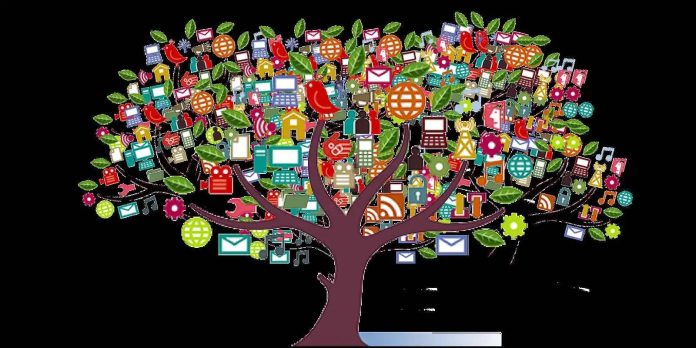In this comprehensive article, we delve into the vast universe of marketing, exploring the myriad strategies, tactics, and tools at our disposal in today’s digital age. Our objective is to provide a thorough understanding of the ins and outs of this dynamic industry, ensuring that readers are empowered with the knowledge they need to achieve success in their marketing endeavors. With a focus on both traditional and digital channels, we will uncover the key drivers of marketing success and how to navigate the ever-changing landscape of the marketing world.
To begin our exploration, we will first define marketing and examine its role in the modern business landscape. We will then discuss the various strategies that businesses employ to promote their products or services, shedding light on both short-term and long-term strategies. Examples of these strategies include product promotion, branding, public relations, and market research.
Next, we will delve into the world of marketing tactics, examining the specific techniques businesses use to implement their strategies. These tactics often fall under various sub-domains of marketing, such as advertising, public relations, sales promotion, and personal selling. We will discuss the key differences between these tactics, as well as their effectiveness in different marketing scenarios.
Throughout the article, we will also introduce various marketing tools and technologies that can help businesses streamline their marketing efforts and maintain a competitive edge. These tools include search engine optimization (SEO), content management systems (CMS), social media platforms, and analytics tools. We will discuss how these tools can be employed to enhance marketing strategies and increase ROI.
Finally, we will close with some closing thoughts on the future of marketing and how businesses must adapt their strategies to remain competitive in today’s ever-evolving digital landscape.
So, let’s embark on this enlightening journey to explore the comprehensive universe of marketing!
Table of Contents
- 1. Unraveling the Intricacies of Marketing Strategies: A Deep Dive into Multifaceted Approaches
- 2. Maximizing Marketing Tactics: Empowering Tools to Navigate the Ever-Evolving Universe of Digital Marketing
- Q&A
- Final Thoughts

1. Unraveling the Intricacies of Marketing Strategies: A Deep Dive into Multifaceted Approaches
“`
Understanding the multifaceted nature of marketing strategies requires a comprehensive approach. By delving into the intricacies of various marketing channels and techniques, businesses can gain a clearer perspective and refine their methods to achieve greater success.
In a world where competition is fierce and consumer preferences ever-evolving, businesses must adapt and innovate to stay ahead of the game. This necessitates exploring diverse marketing strategies and techniques, such as:
- Content Marketing: The creation and sharing of valuable, relevant, and consistent content across multiple platforms to engage and educate audiences.
- Digital Marketing: The use of digital channels like social media, search engines, email, and websites to reach customers and promote products or services.
- Search Engine Optimization (SEO): The process of optimizing a website’s structure, content, and metadata to improve its ranking on search engine results pages.
- Search Engine Marketing (SEM): The use of paid advertising on search engines to generate traffic and conversions.
- Social Media Marketing (SMM): The utilization of social media platforms like Facebook, Twitter, and LinkedIn to promote products or services and engage with followers.
- Public Relations (PR): The promotion of a company’s image and products through a mix of traditional and digital media outlets.
By analyzing each of these strategies within the broader context of a business’s overall marketing goals, organizations can gain valuable insights and refine their marketing efforts. Ultimately, this comprehensive understanding will pave the way to more effective and successful marketing campaigns.
“`
2. Maximizing Marketing Tactics: Empowering Tools to Navigate the Ever-Evolving Universe of Digital Marketing
In today’s digital landscape, maximizing marketing tactics has become crucial for businesses to remain competitive and reach their target audience effectively. This section explores the empowering tools required to navigate the ever-evolving universe of digital marketing. Leveraging these cutting-edge tools can revolutionize your marketing efforts, yielding efficient results that translate into growth and success. Let’s dive into the world of digital marketing tools and strategies:
- Content Marketing: Content marketing is a powerful tool that helps businesses create and share valuable, informative, and engaging content with their target audience. This helps to establish trust, build relationships, and attract potential customers. Some popular content marketing channels include blogs, videos, social media posts, and email campaigns.
- Search Engine Optimization (SEO): SEO is the practice of optimizing a website to have a high ranking on search engine result pages. This involves analyzing and optimizing various elements such as website structure, metadata, and content quality. Implementing effective SEO techniques can significantly increase organic traffic and drive conversions.
In addition to content marketing and SEO, modern digital marketing strategies embrace innovative tools such as:
- Social Media Marketing: Social media platforms provide an excellent platform to connect with current and potential customers, share updates, and engage in meaningful conversations. By utilizing social media marketing tools like Hootsuite or Buffer, businesses can streamline their social media management efforts and maximize engagement on various platforms.
- Email Marketing: Email marketing allows businesses to nurture and engage with their audience over time. By using tools like Mailchimp or Sendinblue, businesses can create targeted email campaigns that drive conversions and improve customer retention.
- Influencer Marketing: Influencer marketing involves collaborating with influential individuals or brands to promote products or services across social media channels. This strategy can help businesses reach new audiences and tap into trusted sources. Tools like Influenster and Social Blade can help businesses identify and collaborate with top influencers in their niche.
Implementing these digital marketing strategies and utilizing the corresponding tools can go a long way in helping businesses create a strong digital marketing presence and drive increased growth.
Q&A
**Question:** What is the main focus of the article?
**Answer:** The main focus of this article is to provide a comprehensive exploration of the universe of marketing, delving into various strategies, tactics, and tools that businesses can employ to effectively execute their marketing campaigns and achieve their desired outcomes.
**Question:** Can you provide an overview of the different strategies, tactics, and tools discussed in the article?
**Answer:** In this article, we will discuss a wide range of strategies, tactics, and tools that businesses can leverage to create and implement successful marketing campaigns. Some of the key areas that we will cover include:
– Marketing strategies, which involve the high-level planning and direction of a business’s overall marketing efforts. This may involve defining the target market, setting goals, and determining the best channels to reach potential customers.
– Marketing tactics, which are the specific actions and activities that businesses undertake to achieve their marketing objectives. Examples of tactics include content marketing, social media marketing, email marketing, and search engine optimization (SEO).
– Marketing tools, which are the technical platforms and resources that businesses can use to support their marketing efforts – such as marketing automation software, customer relationship management (CRM) systems, and analytics tools.
**Question:** What insights can readers expect to gain from this article?
**Answer:** By reading this article, readers can expect to gain a broader understanding of the complex and ever-evolving marketing landscape. They will learn about the various strategies, tactics, and tools that businesses can leverage to create and implement successful marketing campaigns. Additionally, this article will provide readers with best practices, case studies, and real-world examples that can help them apply these concepts to their own businesses.
Ultimately, this article aims to help readers make informed decisions and develop more effective marketing strategies across their organizations.
Final Thoughts
In conclusion, the exploration of the comprehensive universe of marketing offers a fascinating landscape of strategies, tactics, and tools that businesses can employ to maximize their impact and success. The understanding of these elements is crucial, not just for businesses to thrive, but also to stay ahead of the competition and navigate the ever-evolving digital world.
The strategic approach to marketing involves identifying the target audience, analyzing the market trends, and creating a robust go-to-market plan that aligns with the business’s overall goals. This foundation allows businesses to effectively execute tactical marketing efforts with precision.
Key tactical marketing elements include:
– Digital marketing: This encompasses various channels such as search engine optimization (SEO), social media marketing, email marketing, and content marketing. By harnessing the power of digital channels, businesses can reach a wide audience and drive engagement.
– Traditional marketing: This includes traditional advertising channels such as television, radio, print, and outdoor advertising. Such channels can still be effective in creating brand awareness and reaching a larger audience.
– Public relations (PR): PR plays a crucial role in shaping a company’s image and reputation, thereby influencing consumer perception. PR can be an effective tool for both proactive and reactive communication.
– Analytics and insights: Data-driven marketing enables businesses to make informed decisions by analyzing performance metrics and customer behavior. This helps in optimizing marketing efforts and improving ROI.
Among the various marketing tools and platforms available in the market, it’s crucial for businesses to choose the right tools that fit their specific needs and objectives. Tools such as marketing automation software, customer relationship management (CRM) systems, and marketing analytics tools can streamline marketing processes and help businesses work smarter.
In summary, marketing is a dynamic field that continues to evolve and adapt. Businesses that stay informed, adaptive, and courageous in their approach to marketing will be better prepared to face the ever-changing landscape and come out standing. As such, this article has provided a comprehensive overview of the universe of marketing, offering insights into strategies, tactics, and tools that organizations can leverage to enhance their marketing efforts.
